There is no component more vital to a gaming PC than the graphics card. It’s the engine behind every top game, and picking the right card means your rig will run the most demanding games for years.
Graphics cards are no joke, but that does mean that it can be tricky to pick the right part.
If you’re not sure about how graphics cards work, then read on – and if you still need to pick a card, then read our guide for the top chips for work and play.
Graphics Basics:
Graphics cards are computers that sit within your computer – they have a central processor, memory and caches. However, graphics cards are built in fundamentally different ways to standard processors: they use hundreds or thousands of stream processors rather than two or four cores, for instance, and their memory runs at far higher speeds than normal computer RAM.
The thousands of stream processors in a high-end graphics card use specialist architectures that AMD and Nvidia spend years researching, with designs built to accelerate calculations, delegate work more efficiently and render pixels as effectively as possible.
Nvidia’s latest architecture is called Pascal, and it’s made huge waves since its Summer 2016 debut. It’s used in Nvidia GeForce GTX 10-series cards, and it’s revolutionary: the manufacturing process has been shrunk from 28nm to 16nm, which means Nvidia can fit more transistors into smaller spaces. That, in turn, means that Nvidia delivers more performance while reducing power consumption.
AMD’s current cards use the Polaris architecture, which is a 14nm improvement of its existing Graphics Core Next design. However, Polaris cards are mid-range units like the Radeon RX 460 and RX 470.
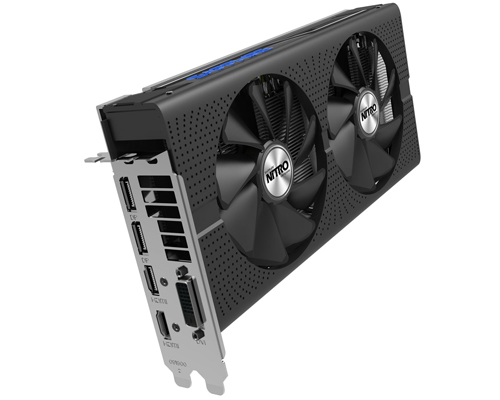
Making Memories:
It’s not just about the core, though. Every GPU has video memory, and games won’t run well at high resolutions if you don’t have at least 4GB on-board.
Thankfully, most cards from the mid-range upwards now come with 4GB, and top cards have double that amount.
Pay close attention to memory, because AMD Polaris and Nvidia Pascal have changed the market. Until Polaris, graphics memory was quite simple: have 4GB of memory at the fastest speed possible, because that memory is accessed using a narrow access bus.
These days, though, High Bandwidth Memory has changed the game. Those revised chips use a wider bus that affords the memory a slower speed, so similar or improved levels of performance can be delivered – and it’s only getting better with the second generation of HBM arriving with Polaris.
Nvidia has gone its own way with Pascal’s GDDR5X memory, which improves the traditional design to deliver higher speeds and familiarly narrow access.
Nvidia, AMD, or Board Partners?
Nvidia and AMD produce reference designs – basic cards that act as blueprints for other companies to develop. These other firms are known as Board Partners, and they’re the ones that produce the vast majority of the cards on the shelves.
Most board partners reproduce Nvidia and AMD’s reference designs for more affordable cards, but every board partner also designs their own versions.
These often come with extra features to make cooling quieter or more effective, or with different display outputs. Many also have core and memory overclocks, which make them an easy route to improved performance.
Board partner cards also have more aesthetic variety than reference designs, with outlandish coolers or smaller models that’ll fit inside mini-ITX and micro-ATX computers. Many even have RGB LEDs – perfect for fitting inside stylish, colour-matched machines.
Enter the Market:
Cards at the affordable end of the market are perfect for a huge range of tasks: these cards will handle 1080p gaming with ease, and they’ll also surge through basic multi-monitor setups and even widescreen panels .
This is an area where AMD’s Polaris architecture dominates. The fantastic AMD Radeon RX 460 is the entry-level chip, and it still comes with 896 stream processors. Our favourite version comes from PowerColor and fits into the firm’s Red Dragon range, which delivers a boost overclock of 10MHz in a compact package – perfect for building a smaller rig.
We also love the Sapphire Radeon RX 470 Nitro+ OC. It’s a step up from the RX 460 and it costs £209, but there’s loads to like about this full-size card: its core has been overclocked from 926MHz to 1,143MHz, and it has 8GB of memory . It has innovative cooling, and it’s powerful enough to handle 1080p, 1440p and VR gameplay.
Mid-Range Marvels:
AMD dominates the more affordable end of the market, but Nvidia arrives with a bang at £200.
The green team’s contender is the GTX 1060, which has 1,280 Pascal CUDA cores alongside 6GB of GDDR5 memory – perfect for 1080p, 1440p and VR. We have two favourite choices here, and the first is our own Overclockers UK Reference Design, which perfects Nvidia’s design and maintains the 1,506MHz core clock.
We also favour this MSI model, which overclocks the core to 1,544MHz in a design that’s a little smaller than the reference card and only needs a single fan.
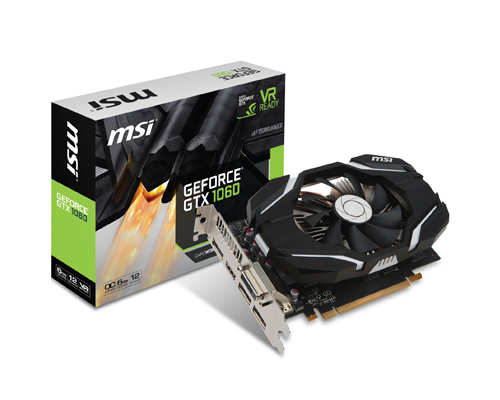
That’s not to say that AMD doesn’t have anything here: the RX 480 is the firm’s best Polaris card, and it comes with 2,304 stream processors and a rapid 1,120MHz core, along with either 4GB or 8GB of memory. Our picks are both 8GB versions and offer comparable performance with the GTX 1060 – so they’re perfect for 1080p, 1440p, widescreen or VR, but not something as demanding as 4K.
Our first choice is the Sapphire Radeon RX 480, which costs under £220. It’s a little cheaper than the other cards here, and it mimics AMD’s reference design – so you get a smart soft-touch finish and a stock-speed core.
Spend £218.99 and you’ll get the PowerColour Radeon RX 480 Devil, which runs at 1,188MHz – so you’ll get a performance boost. It’s a huge card, with three fans to keep temperatures down and an eye-catching red-and-black design.
High-End Hardware:
This is where prices begin to rise, but it’s also where today’s architectures really flex their muscles. It’s also where Nvidia is dominant.
The GTX 1070 is one of the best Pascal chips available. It has 1,920 stream processors and 8GB of memory, and its core runs at a rapid 1,506MHz – the same speed as the GTX 1060. It’s perfect for any task except for 4K.
Our two favourite GTX 1070 cards come from Zotac. The Founders Edition model takes Nvidia’s stunning reference design, which is all smart metal and angles, and runs the clock at its impressive stock specification. Then there’s the AMP Edition, which boosts the core to 1,607MHz inside a moody, black exterior.
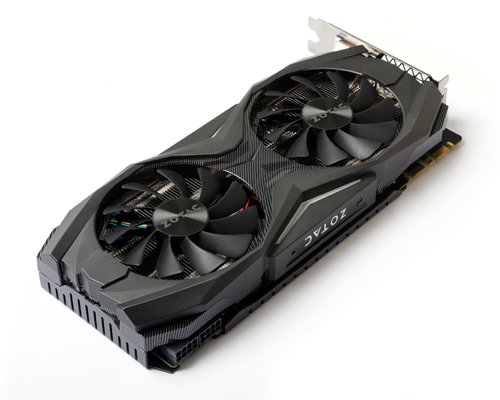
The GTX 1070 is great – and the GTX 1080 is better. It’s Nvidia’s current Pascal flagship, which means enough power to handle every gaming task including smooth 4K playback.
The GTX 1080 is fantastic, but be prepared to pay. The Gigabyte GeForce GTX 1080 G1 Gaming RGB is a stunner, with a core overclocked to 1,721MHz and RGB lighting across its solid black frame – and three fans to ensure that the card keeps cool. Gigabyte’s Xtreme Premier Pack card costs a little more, at XX, but it delivers a 1,787MHz core, memory with a 211MHz overclock and an incredible triple-fan cooling arrangement alongside more RGB lighting.
If you’re after something a little more specific, delve into the Overclockers UK Tech Labs. This range of products is tweaked in-house by our expert team and consists of cards with our own waterblocks pre-fitted – so you can buy a liquid-cooled GPU without any of the headaches and with a full warranty.
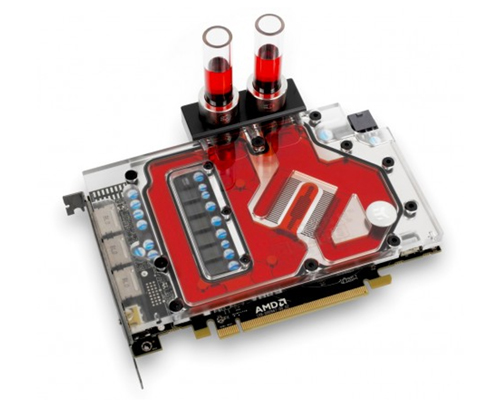
We offer AMD Radeon RX 480 and Nvidia GeForce GTX 1060 cards with waterblocks for around £350, and the range stretches right up to overclocked versions of the GTX 1080 that cost more than £1,000.
Portable Power:
Overclockers UK also stocks Britain’s best range of gaming laptops – and Nvidia Pascal delivers desktop-level power inside laptops for the first time ever.
We’ve got notebooks from Acer, Aorus, Asus, Gigabyte, MSI and more top brands, and we stock small, lightweight laptops, traditional 15.6in notebooks and huge machines with enviable power and 17.3in screens.
Machines that cost less than £1,000 routinely have Core i5 processors, 1080p screens and some of last year’s best Nvidia hardware, and it’s possible to spend little more than £1,000 for a notebook with a GTX 1060 inside. We’ve got notebooks with the GTX 1070 for around £2,000, and you’ll need to pay £2,500 or more for a GTX 1080 inside a laptop.
Our unbeatable range of gaming laptops caters to every budget and preference. If you want to game on the move, look no further.
Conclusion:
Graphics cards are a vital part of the gaming PC’s armoury, and it’s an area where pride ourselves on at Overclockers UK. We’ve got the expert knowledge to deliver the best deals, tweaked cards and systems, and the biggest range of GPUs from AMD, Nvidia and every board partner.
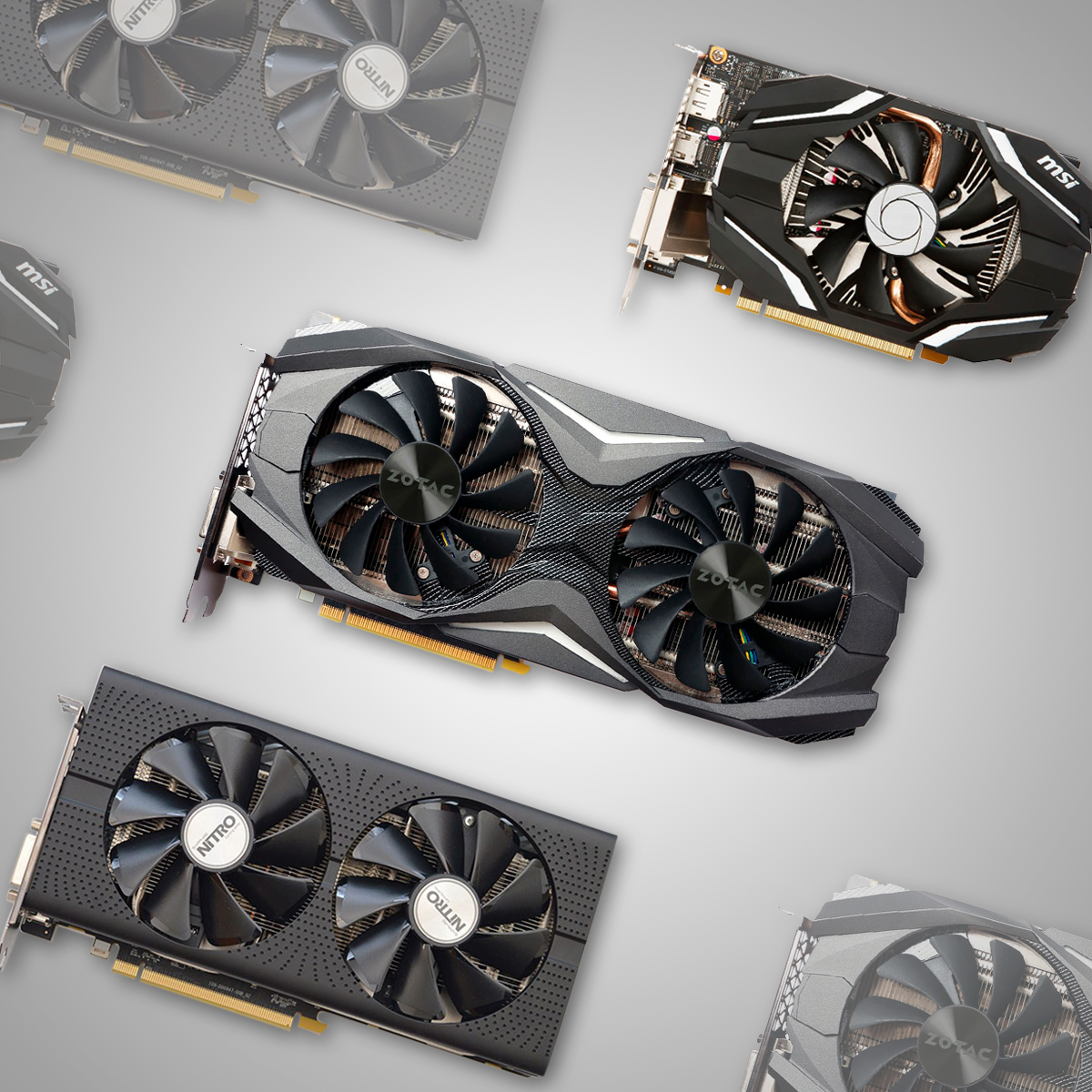
Well written artcile ! Good job 🙂